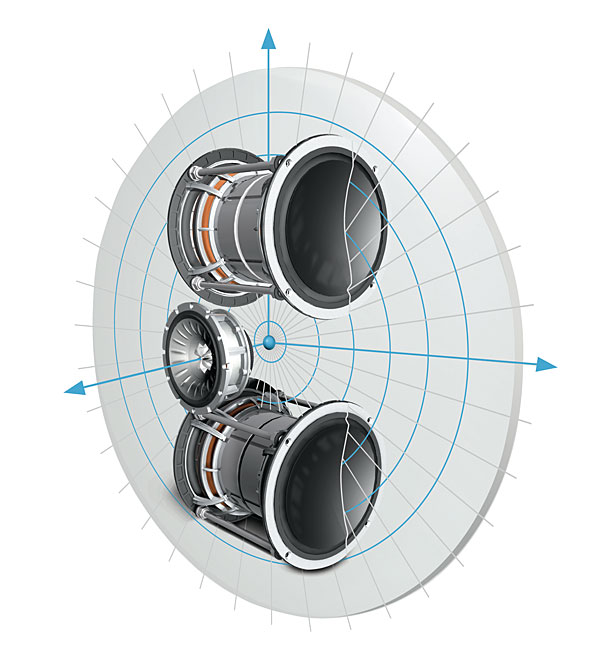| Columns Retired Columns & Blogs |
As a Blade dealer who has both the LS 50 and the Blades and the Ref 1 and 3 and the R series, I feel I know the line really, really well.
I agree with many of the comments that were made, however, I was really taken back by the comparison to the LS 50 saying that other than increased bass, and dynamics, you seem to be implying that there is some similarity between the LS 50 and the Blade II.
We love the LS 50 and even with the matching KEF R400 sub woofer the sound is really great, and in fact will challenge a lot of $5k plus speakers, but the resulting sound doesn't come close to amazing resolution, and incredible holographic sound stage, which comes out of the Blades, so it is not just about the increased bass and dynamics, there is a wholeness and organic quality to the sound that you just don't get out of the LS 50 or many other speakers.
We had a setup at the New York High End Show in 2013 with the original Blades setup with state of the art electronics, a Merrill Williams Turntable, and an EMM Labs Digital setup and the system was amazing! Yes this system was over a $100k: $30k speakers, and 50k electronics, and $15k front end plus $20k plus on cables, so the system was up there in price but I did listen to the $107k Yg the $54k Wilson's plus some other very expensive speakers and I would say that a well setup pair of Blades offers the performance of speakers in the $50k-100k price range and that is an amazing value proposition that the Kef Blades and Blade II represent.

 And like its small sibling, the LS50—which I described in my review as "one of the finest speakers at reproducing female voices that I have heard"—the big Blade Two, too, loved the female voice. I recently treated myself to the live recording of Russian soprano Anna Netrebko singing Strauss's Four Last Songs, accompanied by the Staatskapelle Berlin conducted by Daniel Barenboim (CD, Deutsche Grammophon 479 3964). I initially felt that Netrebko's opera-gestated vibrato was too deep for this music, but her voice has a molten-metal quality that draws the listener into her performance and that the Blade Twos faithfully reproduced. In the final song, "Im Abendrot" (At Sunset), Strauss's sensitive scoring paints a rich-toned soundstage above which Netrebko soared in contemplative calm, without the KEFs editorializing in any way. And again, the image of the solo violin in the third song, "Beim Schlafengehen" (Going to Sleep), was the correct size, and stable. Magic music. Magic speakers.
And like its small sibling, the LS50—which I described in my review as "one of the finest speakers at reproducing female voices that I have heard"—the big Blade Two, too, loved the female voice. I recently treated myself to the live recording of Russian soprano Anna Netrebko singing Strauss's Four Last Songs, accompanied by the Staatskapelle Berlin conducted by Daniel Barenboim (CD, Deutsche Grammophon 479 3964). I initially felt that Netrebko's opera-gestated vibrato was too deep for this music, but her voice has a molten-metal quality that draws the listener into her performance and that the Blade Twos faithfully reproduced. In the final song, "Im Abendrot" (At Sunset), Strauss's sensitive scoring paints a rich-toned soundstage above which Netrebko soared in contemplative calm, without the KEFs editorializing in any way. And again, the image of the solo violin in the third song, "Beim Schlafengehen" (Going to Sleep), was the correct size, and stable. Magic music. Magic speakers.









































